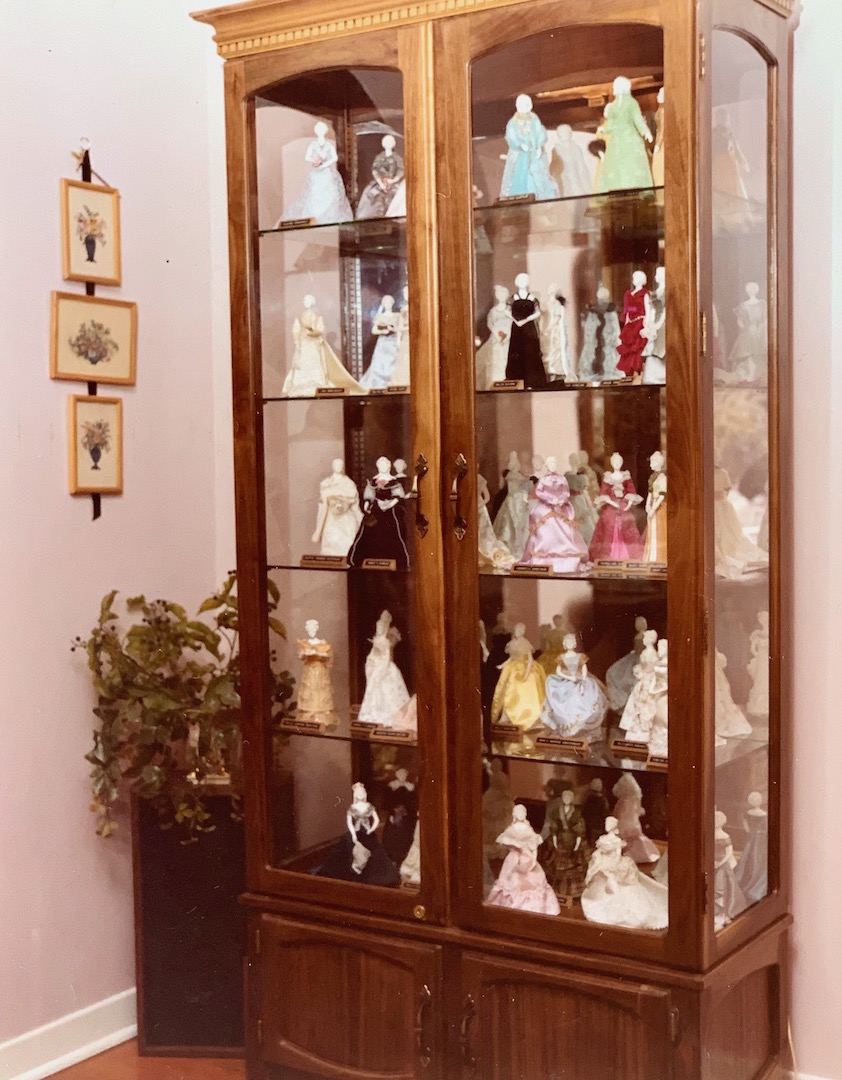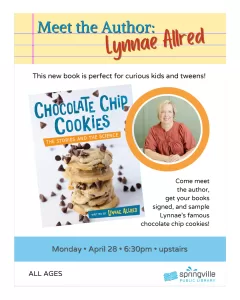A “Digital Legacy” is an online summation of at least one hobby, skill, or contribution that was important to you. Over your lifetime, you may have built up a significant level of skill that you might like to pass on to your descendants. At the very least, you have a library of life stories. I like to think of a “Digital Legacy” as an online library that preserves your legacy so that it can outlive you.
A pile of your photos, journals, heirlooms, and documents left behind may not be a gift. In fact, it may be a burden to your descendants. You are the only person on the planet who can give full context to why all of the “stuff” you are leaving behind might be valuable to them. And some of the time, the things you have learned and can share are important to people outside of your family. We want to create a legacy rather than leaving piles of “stuff” for your family to sort.
Sorting the “Stuff”:

This particular pile of “stuff” belonged to my paternal grandmother, Marie J. Whiting. As a child of the depression, Grandma was a stuff connoisseur—but the sheer amount of it was a bit overwhelming. These boxes contain all of the records from Grandma’s First Lady Dolls hobby. Inside of that pile of yellowing papers are gems that lend insight into who Grandma was, what drove her, and what she valued. My job is to mine out the gems.
I thought it would be fun to document the process of creating this part of Grandma’s Digital Legacy. This may help you figure out how to start a Legacy Project of your own.
The First Ladies: Day 1
Sometime in the early 1950’s, Grandma made up her mind to start on a project she’d dreamed of for several years. She wanted to recreate miniature versions of the First Ladies’ Inaugural Gowns displayed at the Smithsonian. This hobby eventually spanned more than forty years of her life and took her on some breathtaking adventures. It was driven by something at the core of who Marie was, and that’s what I want to discover and preserve.
Phyllis and I discussed some possibilities for preserving the contents of these boxes. Over the next few months, I’m hoping to swap this overwhelming pile of yellowing documents for a more condensed version of Grandma’s lifelong hobby: one that can be shared with her descendants, and others who may be interested.
Day 2: Sorting
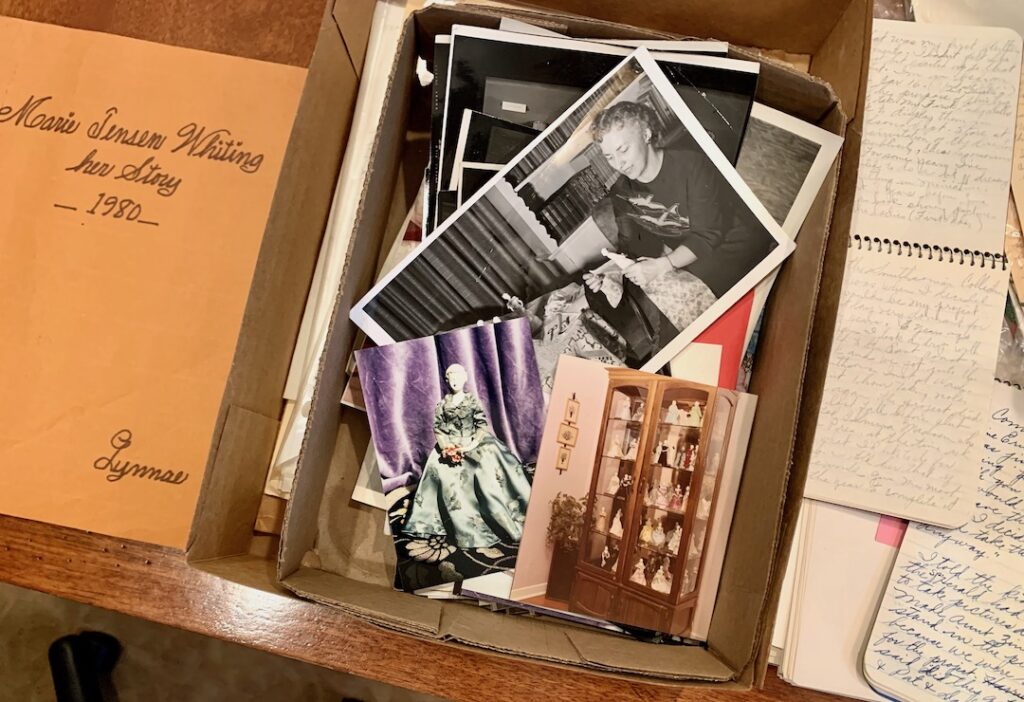
This was a fun day. Because this work is for my own grandmother, I’m anticipating learning about her in a whole new way. Many of these documents I’ve seen before. But most were tucked away, and I’m among the first to dive in to see what is here.
Sorting is often the most overwhelming part of a digital legacy project. Because you have no clear vision yet for what this project is going to become, it’s unnerving to try to decide what to hold onto and what to let go of.
Today’s project was simply sorting into categories. Armed with some post-it notes, I categorized everything from these 3 boxes into one of six piles:
- Photos
- Journals and other documents in Marie’s handwriting
- Correspondence (letters, postcards from Marie, as well as some written to Marie)
- Newspaper clippings that include photos of Marie, or that describe the First Ladies Hobby
- Magazines and pamphlets that include articles about Marie and her hobby
- Everything Else – this included dozens of newspaper articles, magazine articles, and tidbits Marie likely saved for research purposes. They are interesting, and many are likely out of print, but because they are not part of Marie’s personal legacy, I can afford to set these aside for now.
When you begin to create a digital legacy, the hardest part of the sorting process is to avoid getting caught up in the details. I could have spent hours reading correspondence, journal entries, and other documents. And I allowed myself some time to skim some of the documents that looked the most interesting. But for now, my task is simply to cull out what is unnecessary and sort the rest into identifiable categories.

Day 3: Getting Myself Organized
Today is a good day for cleaning the garage. That’s because now that I’ve sorted Grandma’s piles into categories, I need to get organized myself. While I ponder what kind of Ditigal Legacy I’d like to build for Grandma Marie, I will spend the morning in my garage and clean out a few of my own corners.
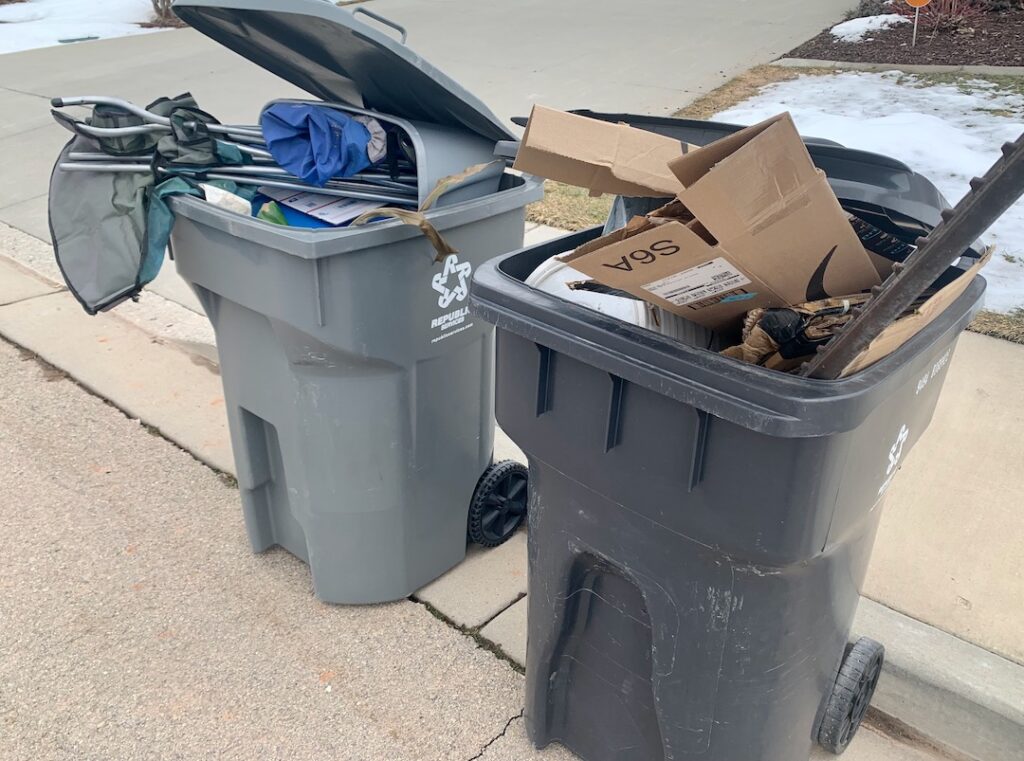
I always do this. Sorting someone else’s stuff inevitably makes me feel guilty about my own. And seeing that others have held onto things they “can’t take with them” allows me to throw some things out that I have hung onto for too long. Note: I haven’t thrown away any of Grandma’s papers yet. That may happen when the project is complete.
Oddly, the quiet time cleaning my garage seems to be something my brain needs in order to compartmentalize information and start to create a vision. There’s something about organizing my cupboards full of camping gear and gardening tools that my brain needed today. I think my head is built in such a way that I have to literally clear some space in my own space before I can work effectively on a Legacy Project for someone else.
I’ll also create 4 important storage spaces as I begin this Digital Legacy Project:
- A folder in my “Photos” folder on my computer specifically for my new client, Marie Jensen Whiting. I’ll store digitized photos of the project here.
- A Marie J. Whiting folder on my computer desktop, since everything I work on over the next few months will be filed and organized into this folder where it’s right at my fingertips.
- A duplicate folder in Google Drive so that everything I save on my desktop is also backed up to the Cloud as I go.
- A manilla folder for Marie in my physical file cabinet. All of the working documents and papers from this project will go here, rather than in piles on my desk.
Day 4: Wrapping My Head Around the Project
I started the day by reading a chapter in Grandma Marie’s personal history titled, “A Detour in My Life.” It includes eight typewritten pages, written by Marie. This history was her own version of her digital legacy, recorded before we really had a sense of what “digital” meant.
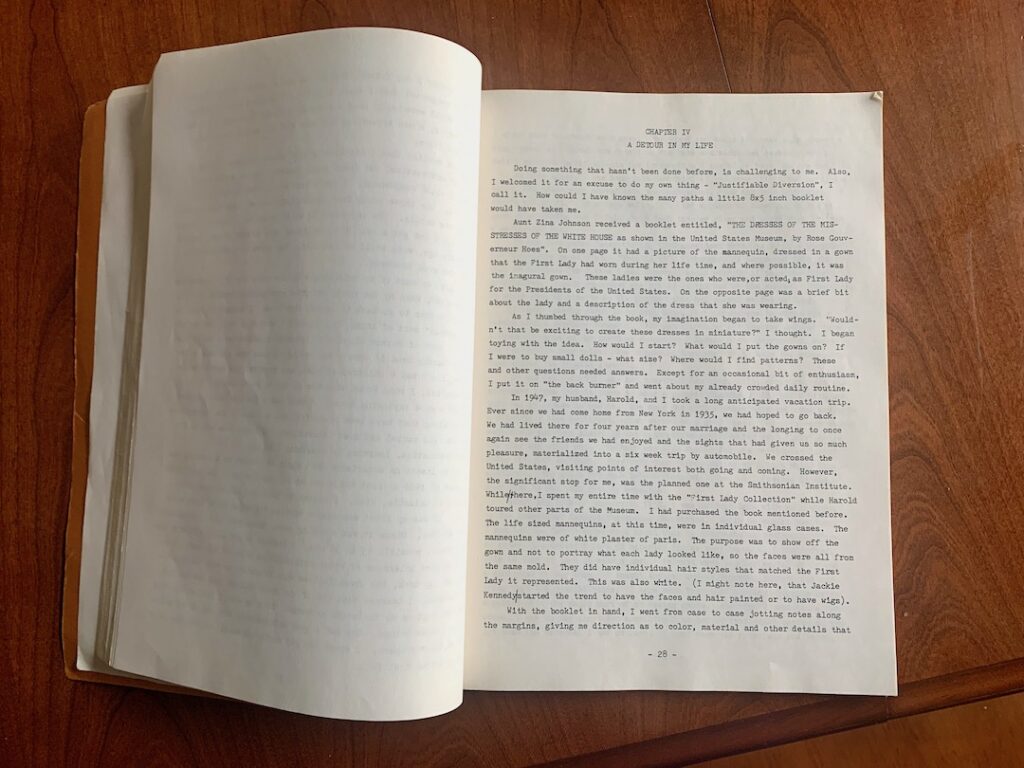
Here’s something interesting: I found this chapter to be quite dull by comparison with digging through all of her documents. Grandma was a pro at writing newsy little tidbits. But this super-condensed version of her hobby only scratches the surface of what this piece of her life must have meant to her. She has related the history, but left most of the pieces of herself out of the story. I know this because of what I saw yesterday as I rummaged through the rest of her Legacy Documents. There are still more gems left unmined. For one thing, there are no photos. Her voice is not here (her actual, recorded voice), and she’s only alluded briefly to “Why.” Why did she spend so much time and effort on this hobby? That is the question I hope to uncover in my search.
The First Ladies: How It Started…
In the autumn of 1951, Grandma decided it might be fun to make miniature versions of the Inaugural gowns of each of the First Ladies to the Presidents of the United States, just like the life-sized gowns she’d seen so many years before at the Smithsonian. Once she made the first one, it looks as if she had some kind of manic episode, because she completed 48 miniature gowns over the next four months. I’m guessing she sewed for several hours each day in order to accomplish this. Her aunt next door made bisque mannequins for each doll.
When the project was complete, Marie put her dolls on display on her dining room table and invited friends and neighbors to come and see what she’d created. She says in her journaling that the response was overwhelming, but I know my Grandma well enough to suspect that she had a bigger plan all along. She was just testing the audience first.
Marie researched each of the First Ladies in-depth, culling out some of the most interesting tidbits into a short 5-6 sentence paragraph about each woman. Once she had a script ready, Grandma and her dolls went on tour. For the next forty years, Marie entertained at women’s clubs all over the Intermountain West.
The dolls are still with us, stored beautifully in a custom-built, glassed-in cabinet built by my father. Grandma died in 2001, but in order to have this hobby survive into the next generation, we have to figure out a plan. You don’t just throw away a cabinet full of First Lady dolls, simply because no one is certain who should take care of them next.
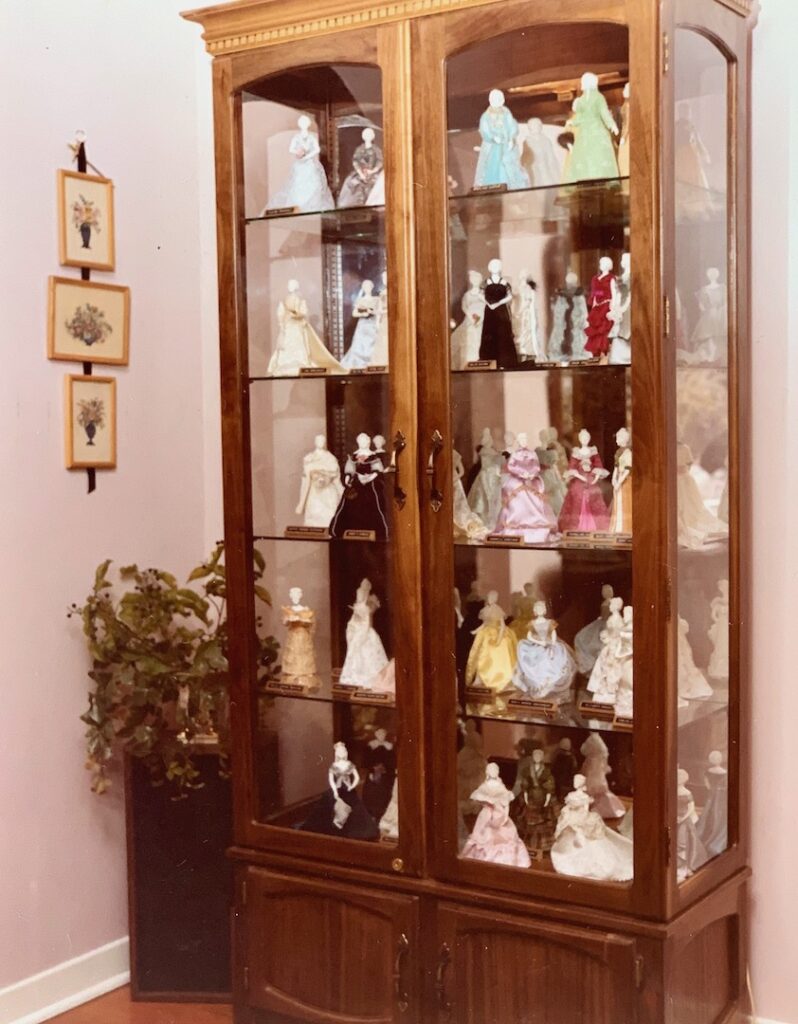
Marie Jensen Whiting’s Digital Legacy is so much more than a collection of hobby dolls. It’s the story of who Marie was and what made her tick. I’m so looking forward to helping her digitize part of that story and share it with the world!
Day 5: Transcribing Grandma’s Mini-Journals
In my search through Grandma’s preserved piles, there were three small spiral-bound notebooks filled with her handwriting. These are my primary documents and will be the first thing I digitize. I’ll scan the originals, but I’m also taking time to transcribe them because I want the contents to be searchable. Although Grandma’s cursive handwriting is beautiful, others may have difficulty reading it. These journals are priceless evidence of what drove her. They document three key events:
- Her plan to create the dolls, including unveiling them for the first time in 1953.
- A travelogue of her trip to Detroit to display the dolls at Hudson’s Department Store in conjunction with Dwight D. Eisenhower’s 1953 inauguration.
- A journal she kept when she went to Washington, D.C. in 1969 to attend the Inaugural Ball after Richard Nixon was elected.
These are Grandma as her real self. Although she’s clearly writing them for posterity, she allows a peek into her motivations, her fears, and the moments that thrilled her. There’s a 6-page list of “compliments” she wrote down as she recalled what others said about her educational lectures. I believe this is foundational information. Those compliments made her feel her work had value. That had to have been a significant motivation.
The Next Step – a Timeline
- 1944 – Visits Smithsonian Museum and sees the Inaugural Gown Display
- 1951 – Decides to begin the project
- 1952 – Completes the dolls in March and displays them for the first time.
- 1953 – Story published in a national magazine. Travels cross-country to display her dolls at Hudson’s Department Store in Detroit
- 1969 – Attends Richard Nixon’s Inaugural Ball
- 1976 – U.S. Bicentennial, and a resurgence of lectures
- 2001 – Marie’s death
With a timeline in place, I can begin to flesh out the story.
